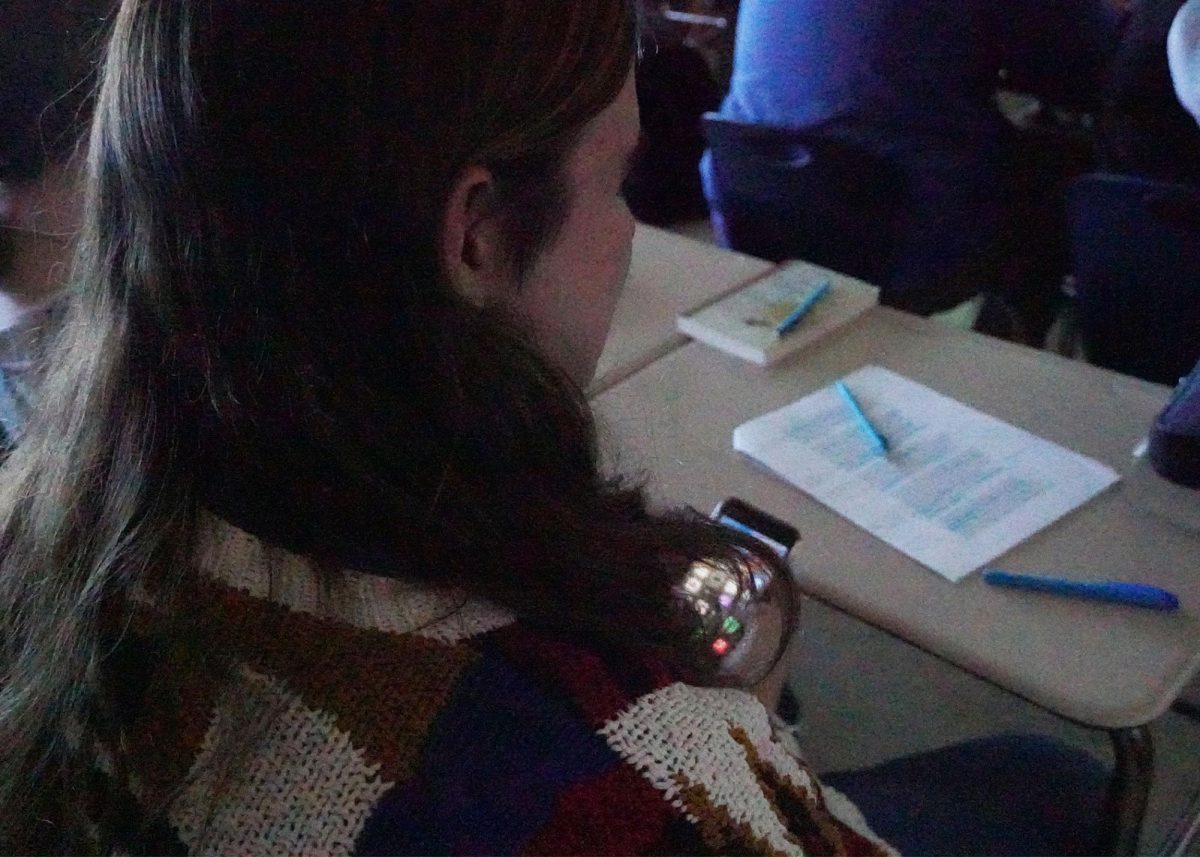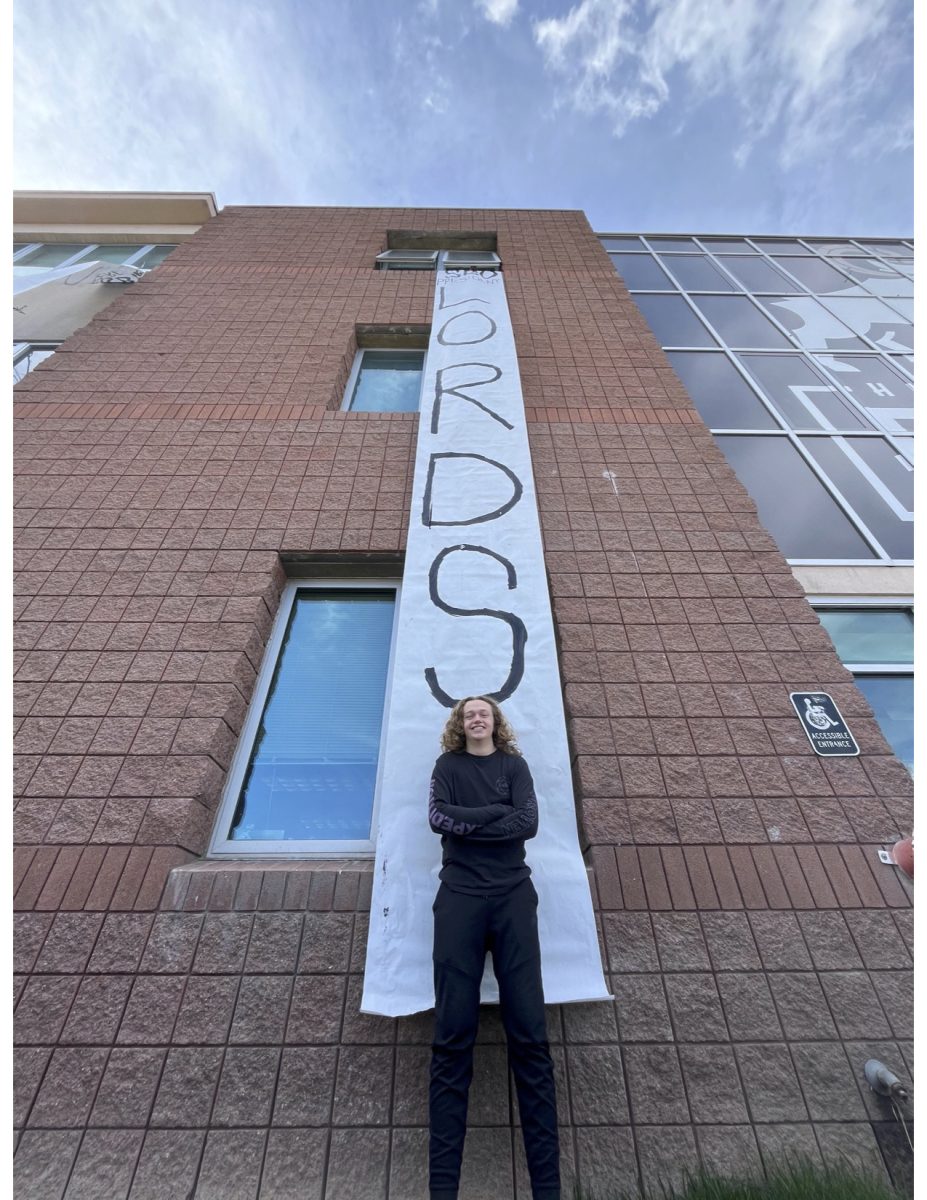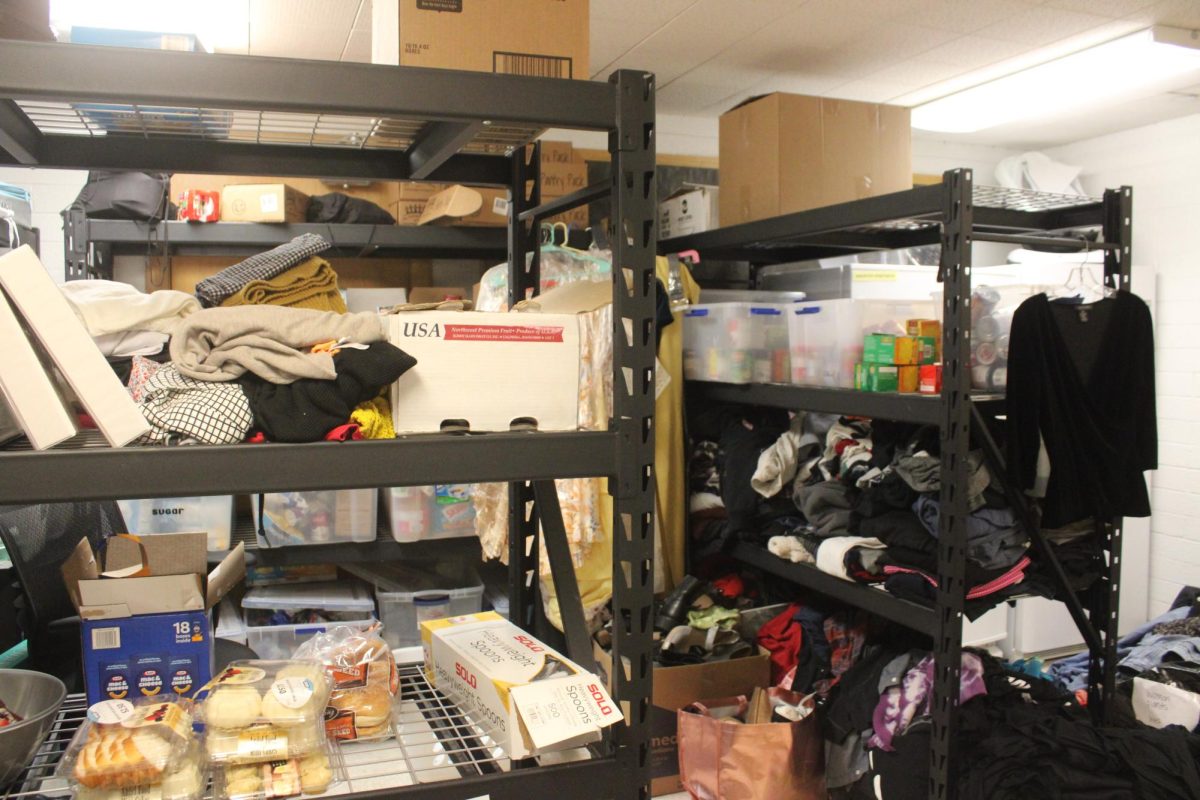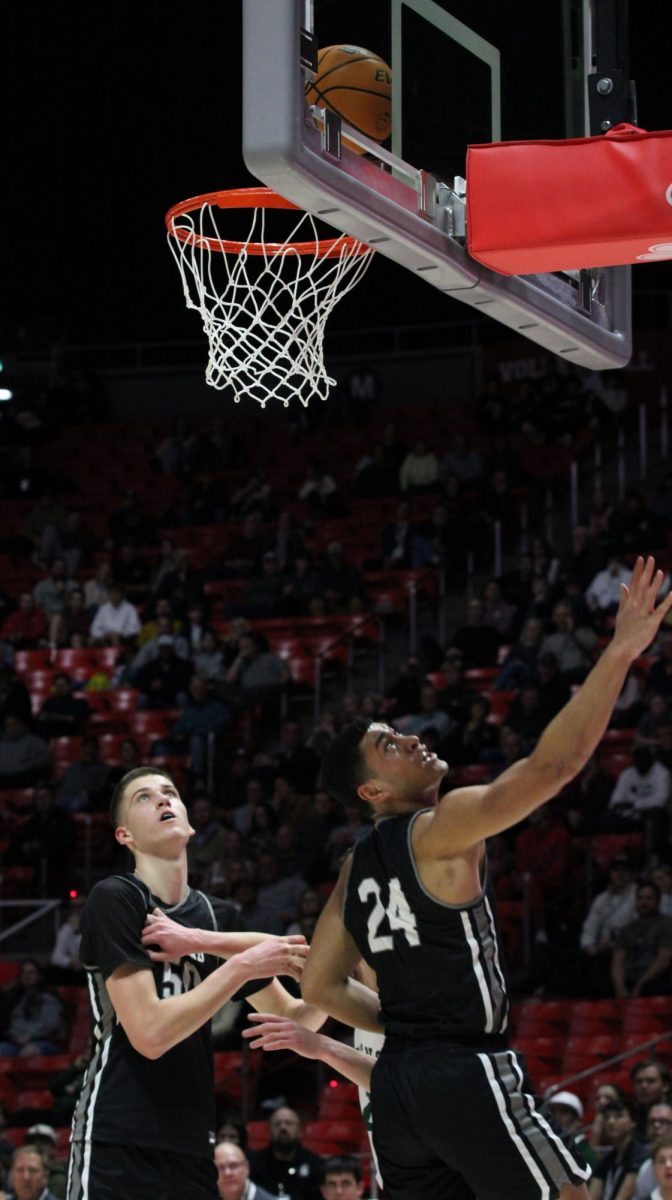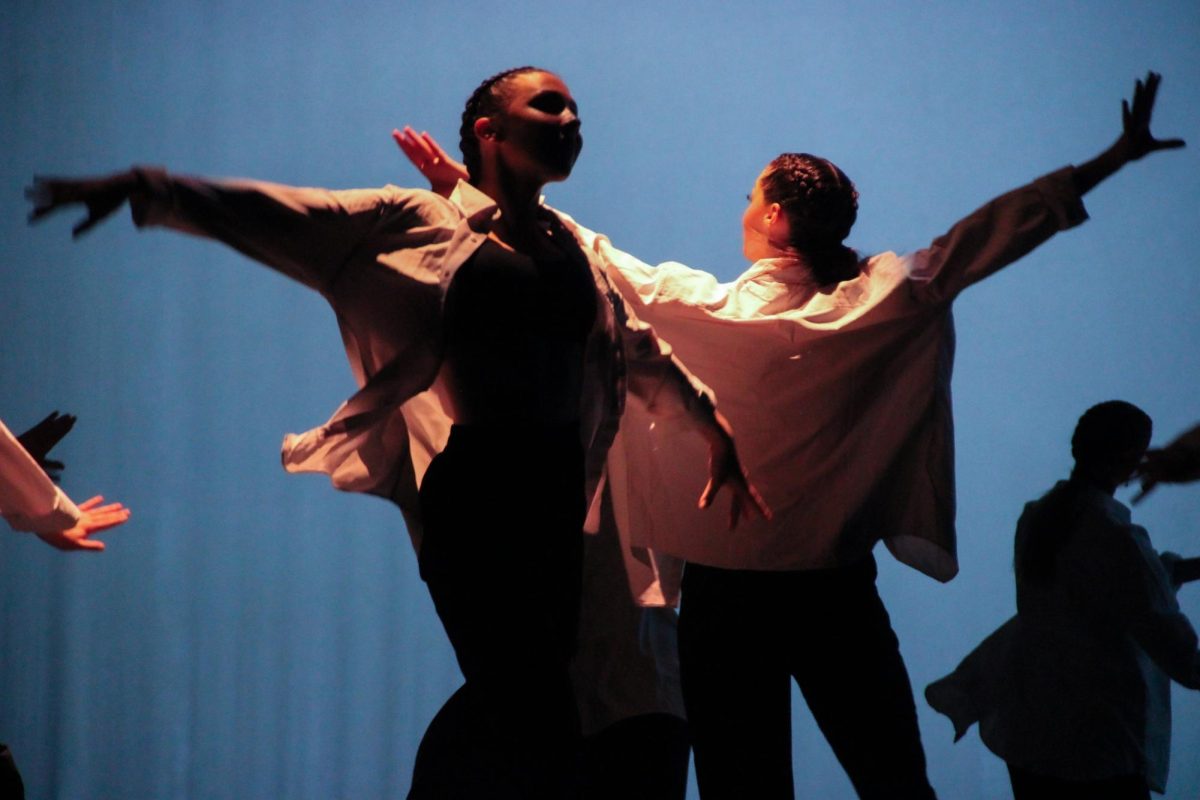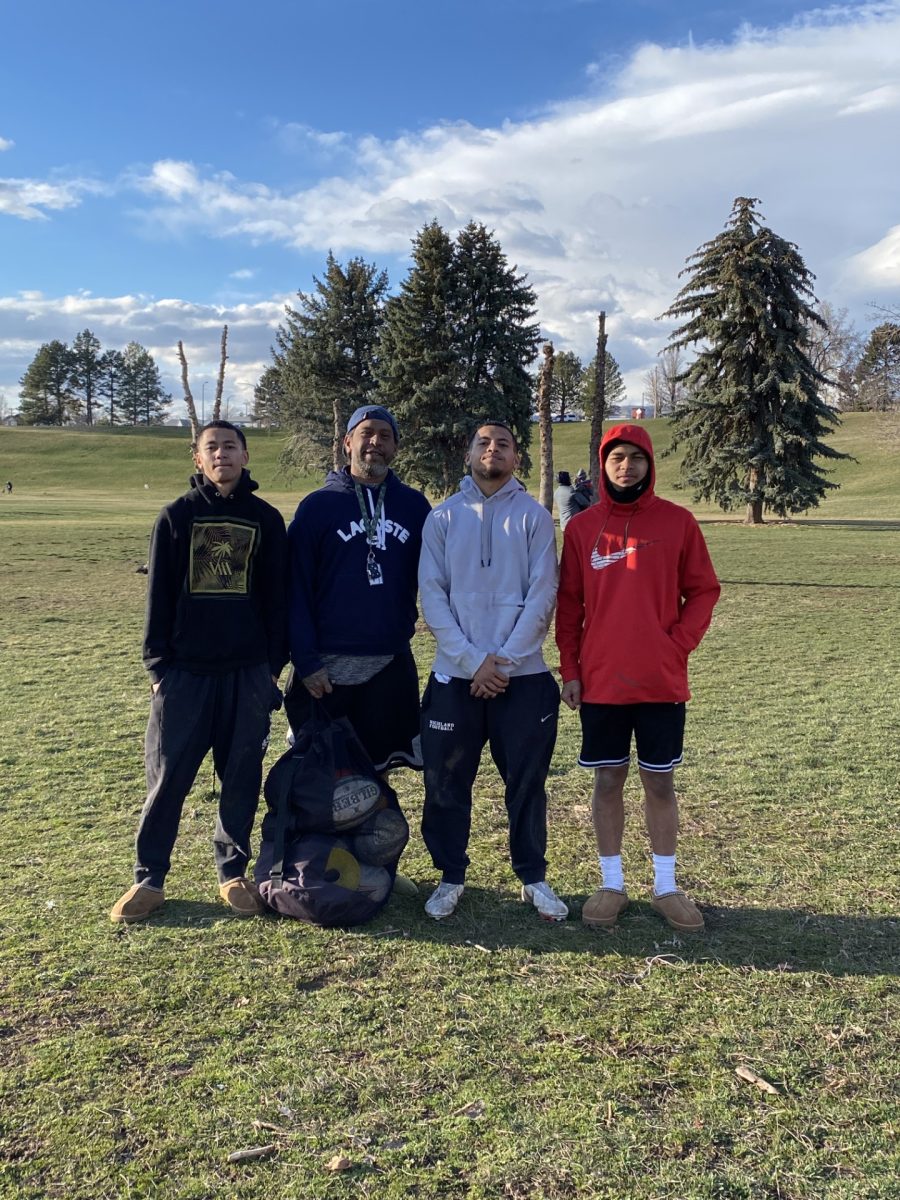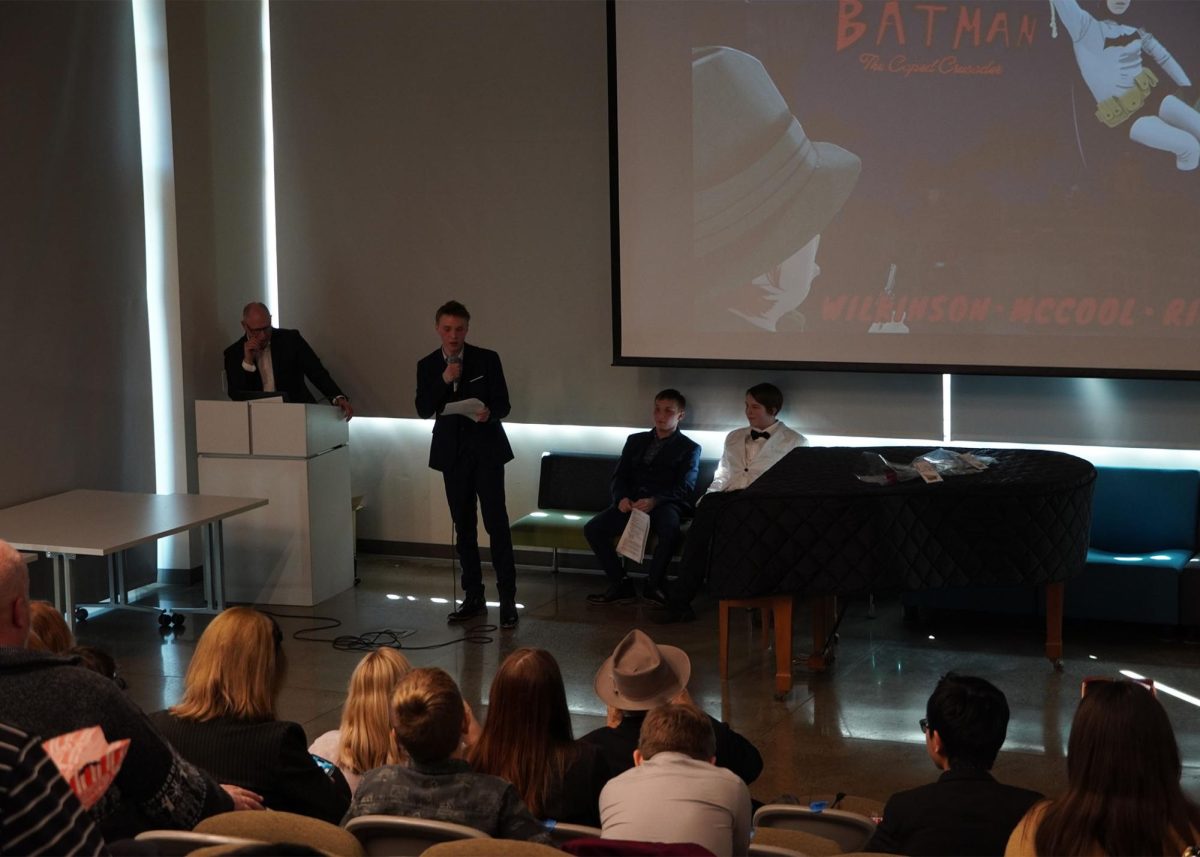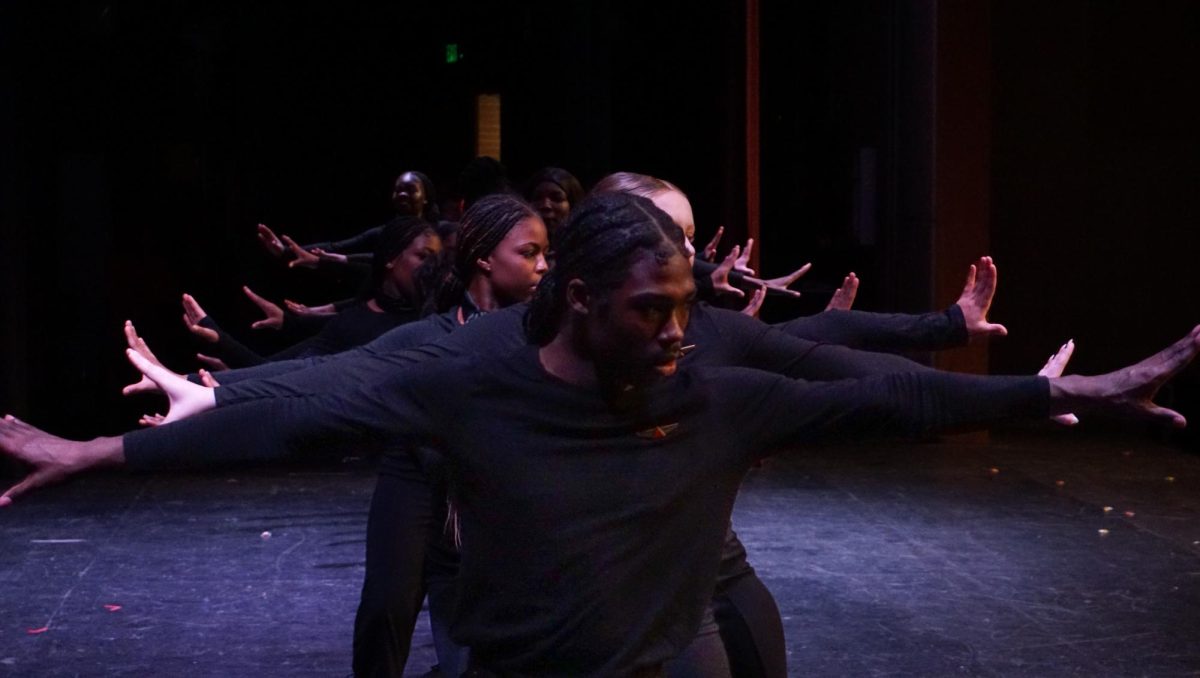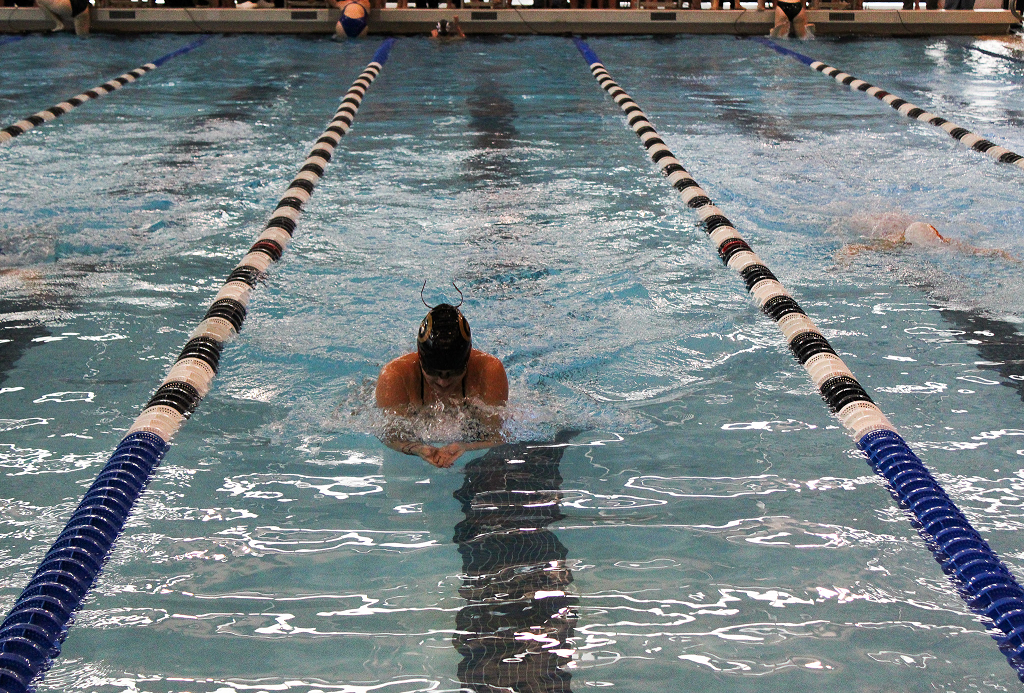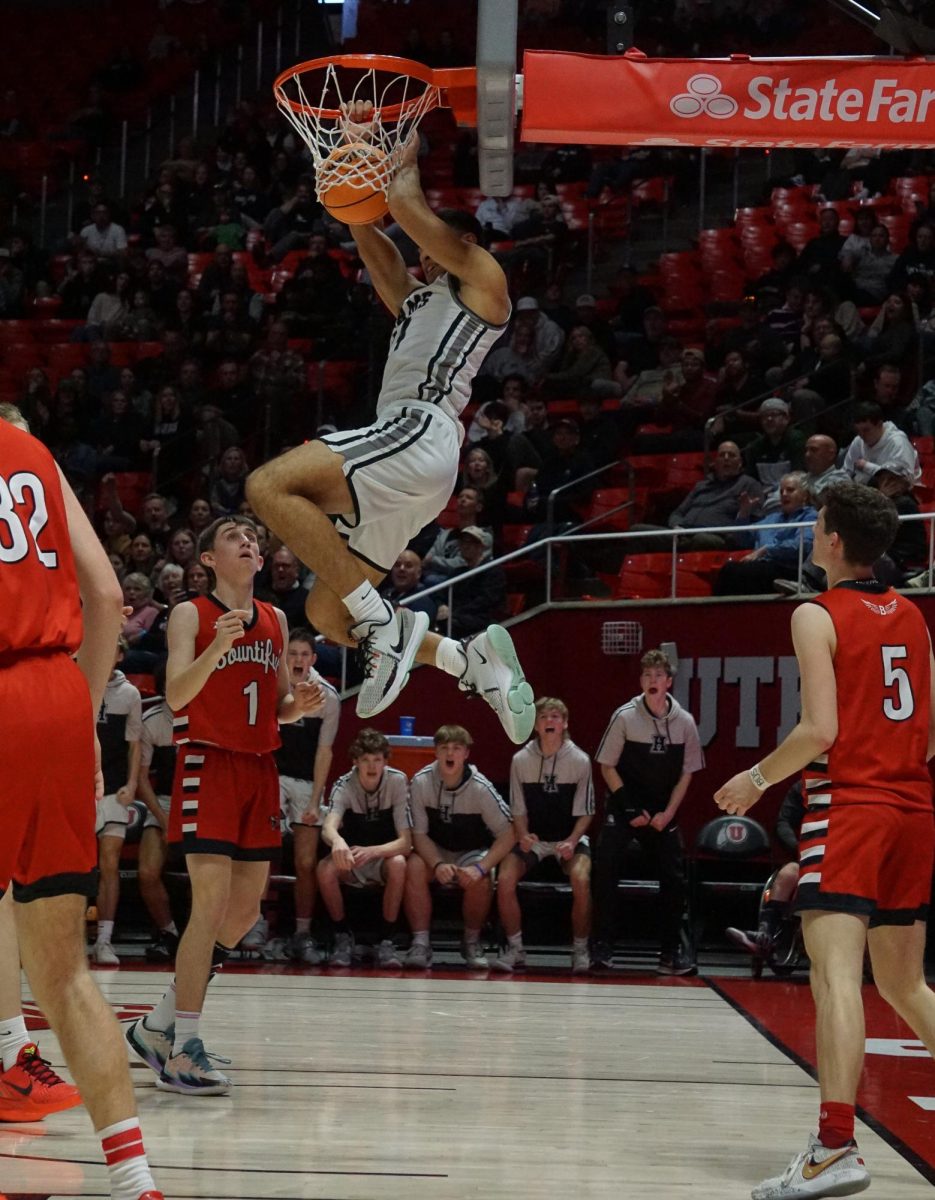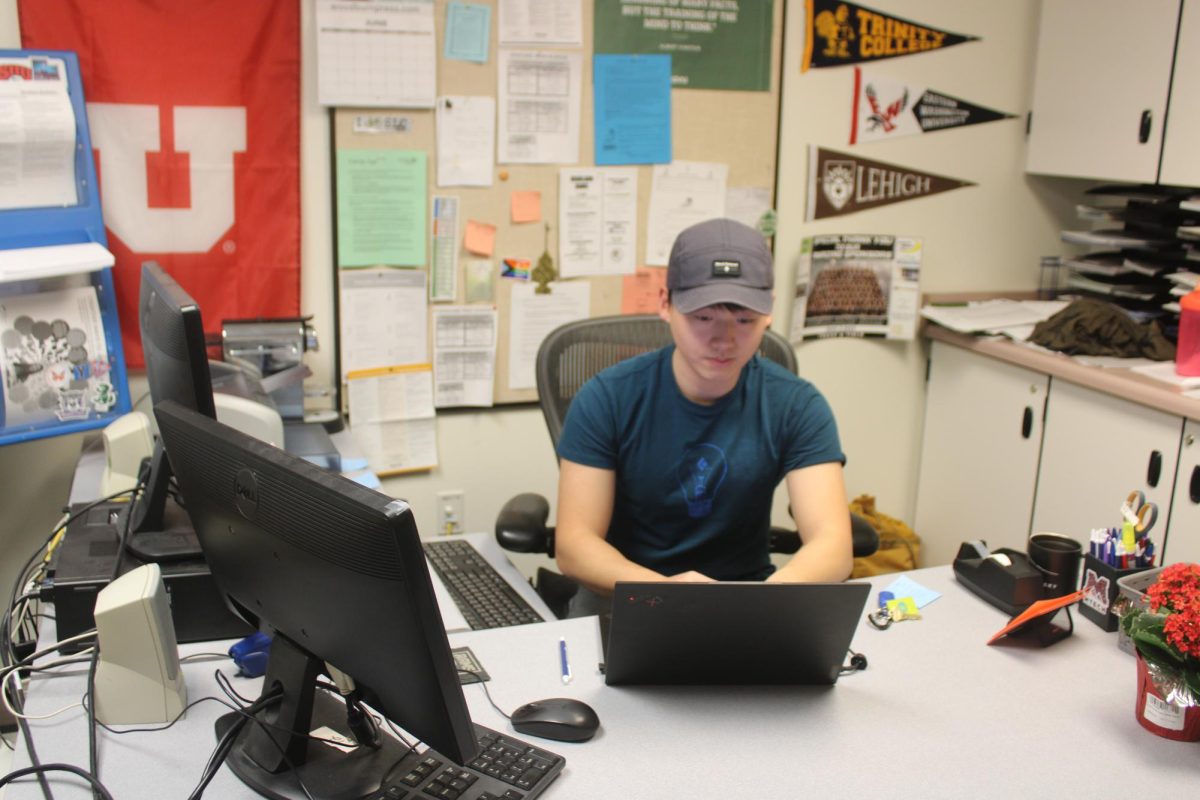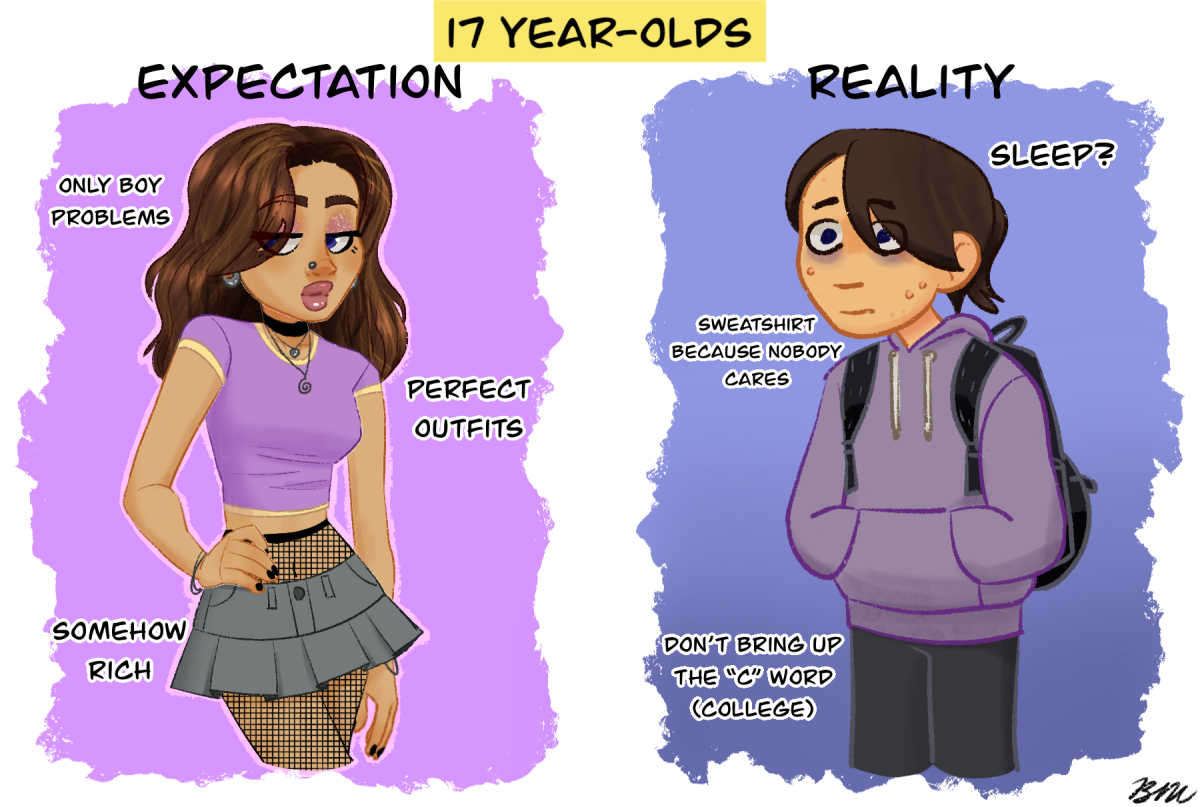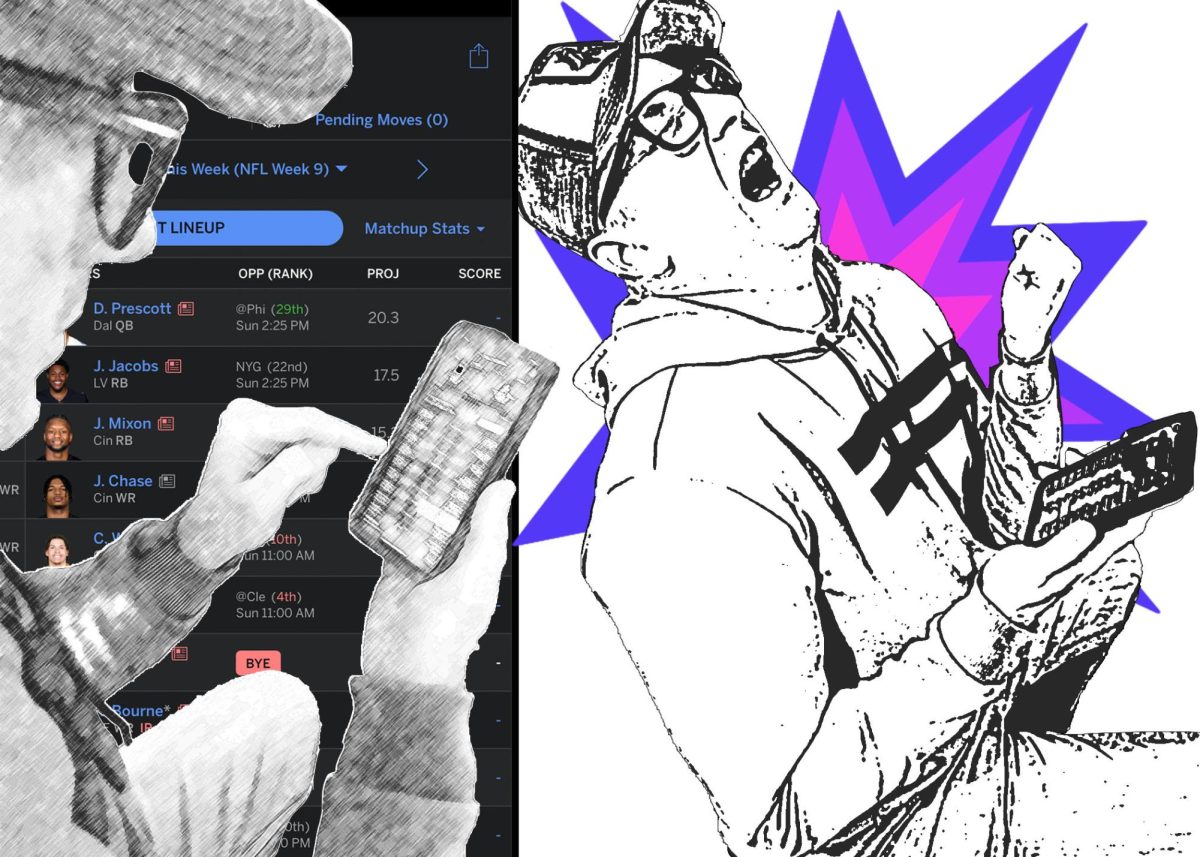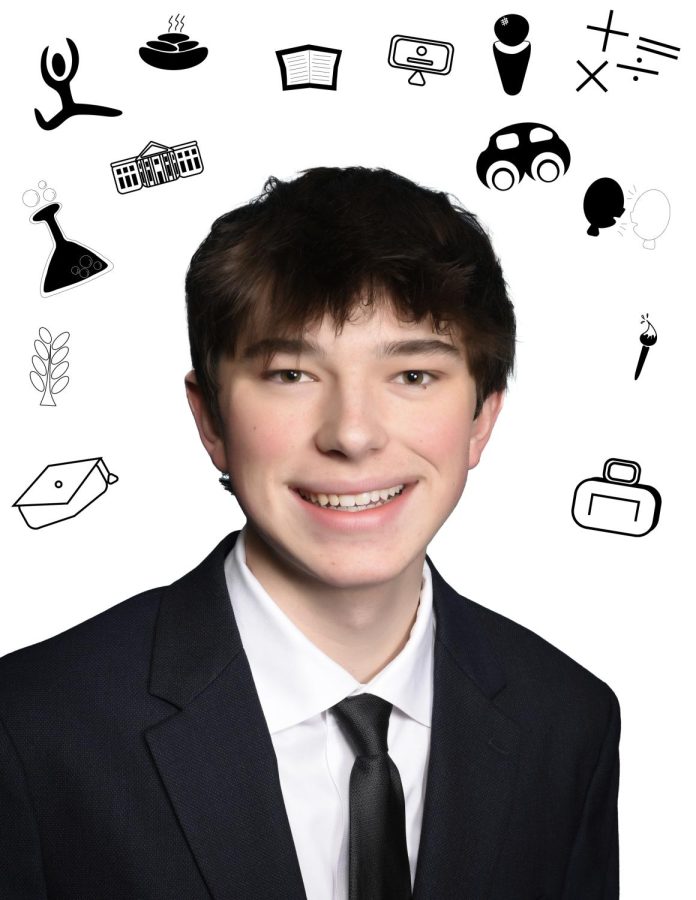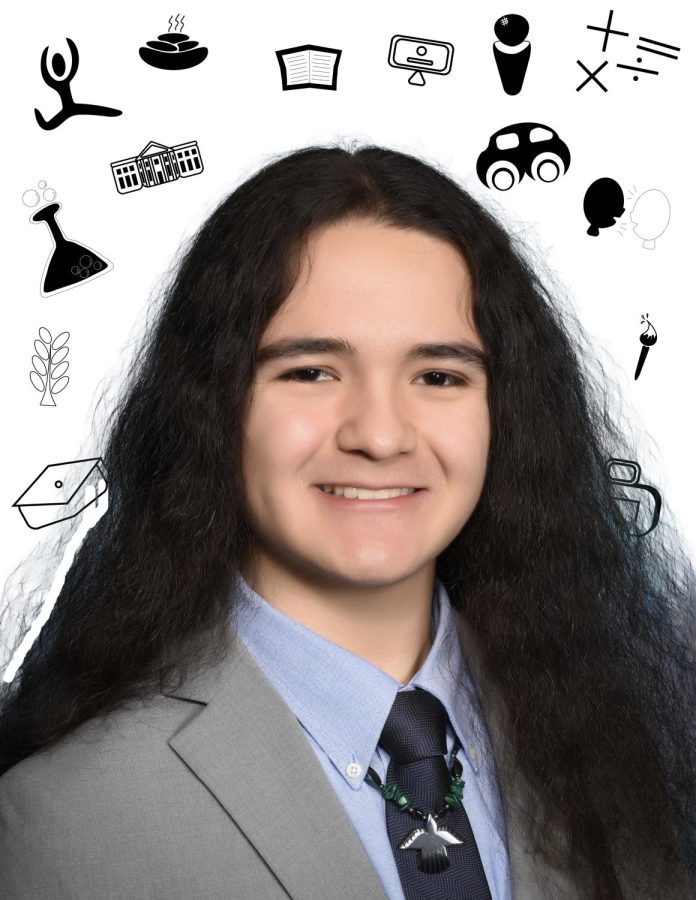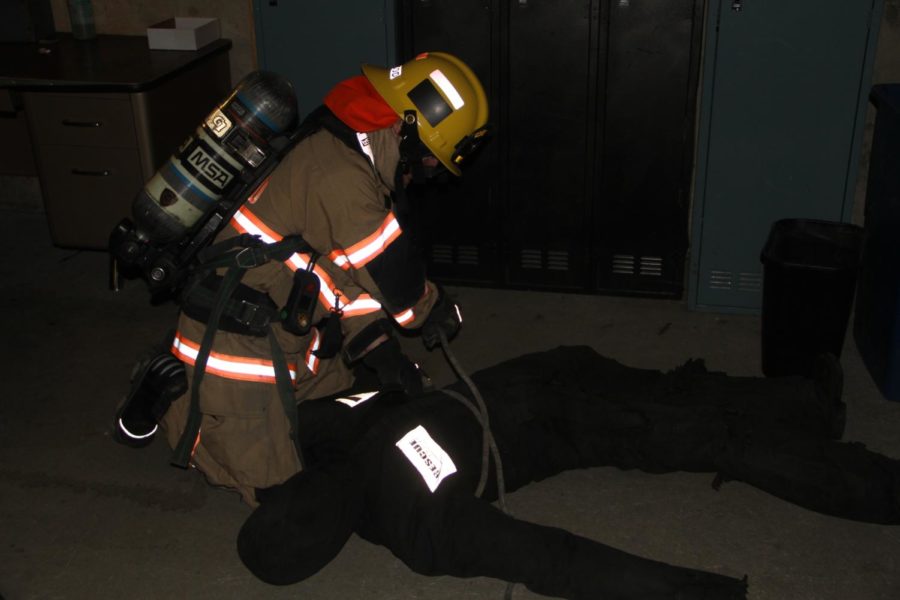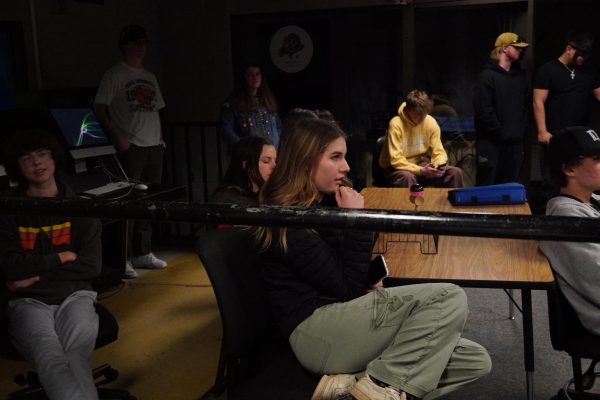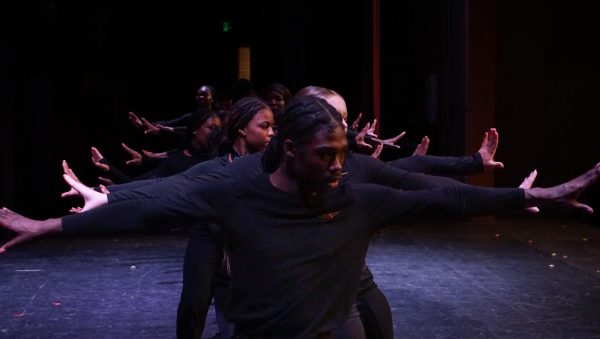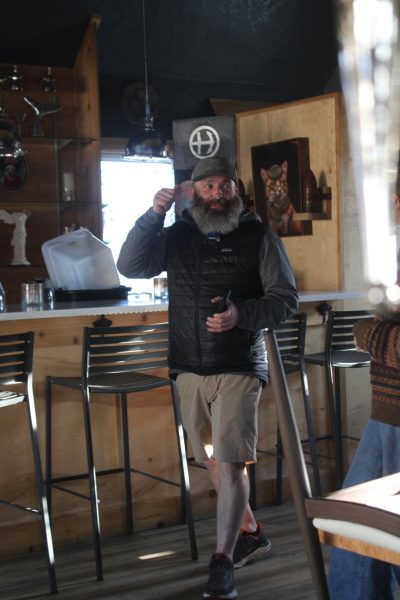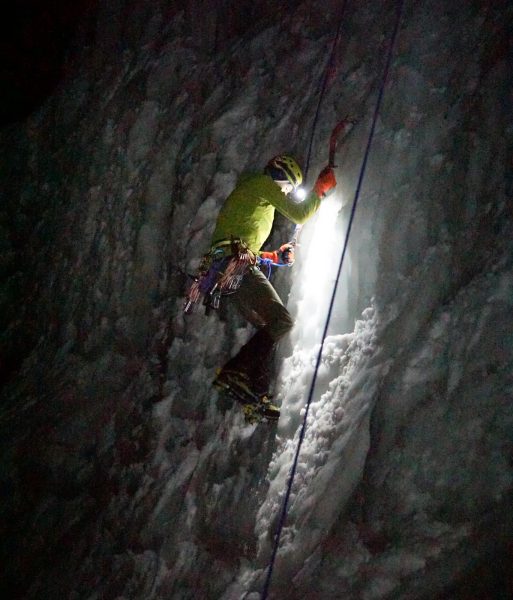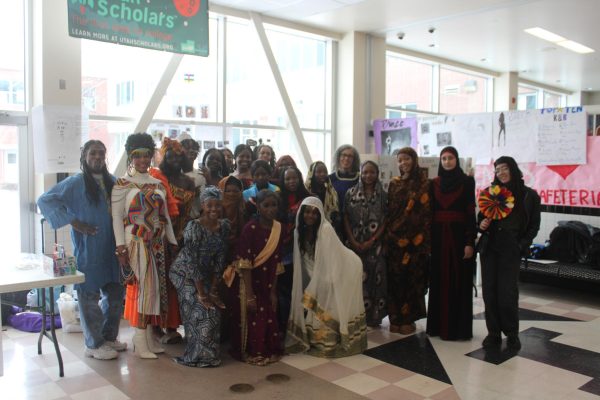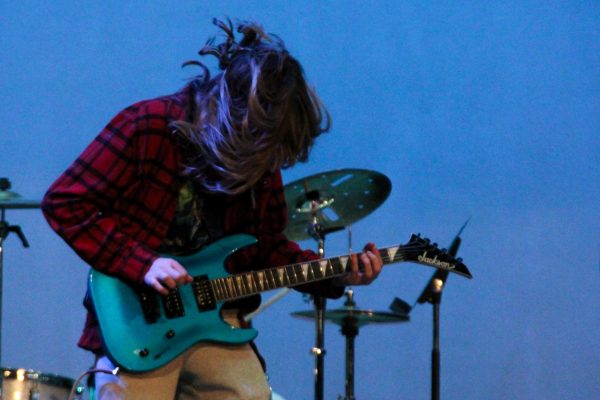Modern Day Heroes
Fire Cadet Program Provides Training For Interested Teen Firefighters
Charlie Goudelock running through a rescue drill with the Salt Lake Fire Department Cadets
September 11, 2019
The rain splashes into puddles outside, hitting the car out back that’s been charred black and gray. There’s a body on the ground, barely visible with the lights off. It’s being dragged slowly, like a sandbag through gravel, over the peaked edges of two wooden slats.
But a 150 pound sandbag, stitched together in the shape of a person, isn’t exactly easy to drag. It catches on the edges of the wood, making Charlie Goudelock and his team sigh in frustration.
This isn’t the first time the fake body has gotten stuck on the homemade obstacle course, and they know it’s going to take some work to get it moving again.
But that’s part of cadet training when you want to be a firefighter.
The Salt Lake City Fire Department Cadet Program is open to teenagers ages 14 to 18, but the students just call themselves “the cadets”.
“Rolls off the tongue easier,” Said Goudelock, a senior at Salt Lake School for the Performing Arts and current cadet trainee.
The program is designed to show and give experience to individuals who are interested in learning what being a firefighter is like. They first attend meetings before getting sworn in and getting their very own uniforms and badges.
Susanna Alley is the Firefighter Development Coordinator who works with the Community Relations Division to help with outreach and recruitment — specifically, getting teenagers interested in fire service.
“The cadets meet on Thursdays at our fire station and we try to keep it as peer led as possible. We divide them into groups and they have a platoon leader and they basically learn throughout the school year,” Alley says.
Alley works with high schools to recruit through the cadet program as well as their own summer programs, Camp Prometheus and Camp Athena are boys and girls camps, both a day long, that meet in September. The camps reach out to participants ages 16-20 to teach them skills and give them opportunities to understand what it takes — both physically and mentally — to be a firefighter.
“We get the chance to train with the best and learn life skills for the future. Through this process we learn what it takes to be a firefighter and why it is so important,” Elizbeth Maxine said. Maxine is another Highland student who participates in the program. “We also get the chance to meet and learn from the chiefs from the SLC fire department and they tell us that we are the future of the fire department; we will be there for the community when we join.”
These students are the future, whether they choose to join the program or not.
Maxine knew from a young age that she wanted to be in emergency rescue, specifically Life Flight. She knew what she wanted to be and the lives she wanted to save, but not everyone in the program has their future planned out.
However, this training can show students possibilities, and how they can provide for those who cannot provide for themselves, if not through fire fighting then through the teamwork, grit, and independence that they learn from it. For Goudelock, this was a chance to really discover a new path.
“I was floating around trying to decide what to do after high school,” Goudelock said. “The program really helped me to know that that’s what I want to do.”
While the summer programs are great starting points in helping young adults feel what the life of a firefighter might be like, the cadet program is a great way to get ongoing experience and skill sets.
“It gives them a really solid background and it gives them access to hands on skills with equipment. They don’t get a preference point but it helps them because they are more familiar now with the job they are seeking,” Alley said.
Along with the experience and familiarity that comes with the program is made that much better with all the amazing activities involved day to day. There’s the forced entry training where students work with current firefighters to force open doors, search and rescue practice using fake bodies and dark obstacle courses, and even a full lesson using real fire and real equipment.
When it comes to these trainings and lessons students need to do more than just follow and instructions.
“There’s a communications skill set they develop, leadership with peers, and I think there is a lot of teamwork,” Alley said.
Students have to learn how to work as teams, trust each other, communicate, and develop their own grit. Creating a team like this where all members must rely on each other for support also provides an amazing opportunity for growing relationships.
On one day, cadets will learn to set up ladders and fire hoses quickly and efficiently, while on the next they’re dragging fake bodies through makeshift attic spaces or learning to break open doors during a fire. A firefighter’s day is diverse, quick, and full of teamwork.
“It’s a great way to get out and make new friends; meeting with the same group once a week forms a tight bond, which helps a lot with the teamwork aspect,” Goudelock said.
The program is strictly peer led, and all members are told to talk through questions or ideas with their chain of command through their peers first. They are also expected to contact mentors on their own instead of involving parents and guardians. They are expected to act as one and lead with everyone in mind as equals.
“I love being part of a great team, but along with that the cadet post has female & male advisers. We all are treated like equals and we all respect each other like friends,” Alley said.
The program is about equal opportunity and leadership for students. Maxine knows that some of her male peers may have advantages that she does not, but she also has her own individual strengths, which means that as teammates they must learn to pool their skills to become one strong unit.
It isn’t all work and no play of course, and members are all provided with the opportunity to go to Lagoon and Bees gameswith some of the firefighters, and to do some of the activities that firefighters do with the department. Students are allowed a sneak peek at the world that firefighters see and the public doesn’t.
“When you join the cadets you join our family. We all learn together and teach each other, if one of us does not understand or has a hard time we will support whoever it is and make sure nobody is left behind,” Says Maxine.
Students are allowed to join this program anytime during high school, though they are encouraged to do so at the beginning of the academic school year. They can do so by contacting Alley at [email protected], or going to slcgov.com to find more on this program and others.
“We want people to come and realize that you can do this and we want to get away from the stigma that you have got to be some 250-pound man to do this job, because you don’t,” Alley said.
This is the message the cadet program is sending and sharing through its hard working participants. They want to include everyone from every background and every way of life because anyone can be a lifesaver.
“I love being in the cadet program because it makes me feel like I can make a difference in the world, almost like a superhero,” Maxine said.
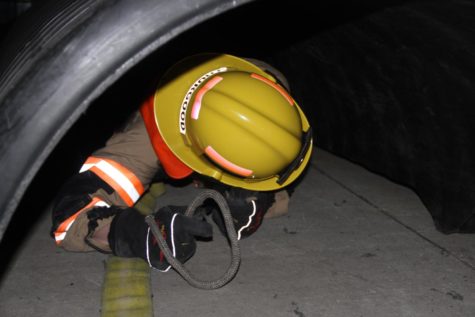
Charlie Goudelock crawls through a makeshift tunnel in a search and rescue drill.
